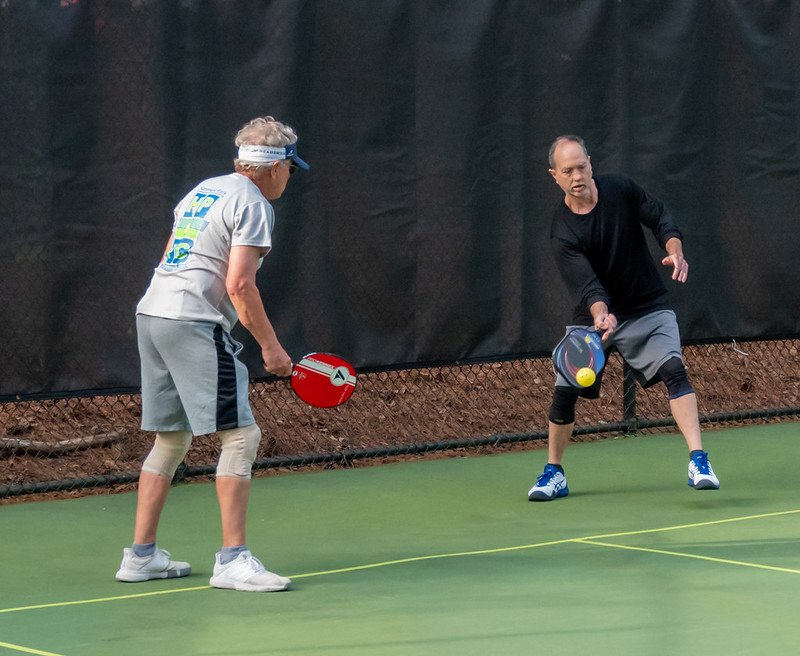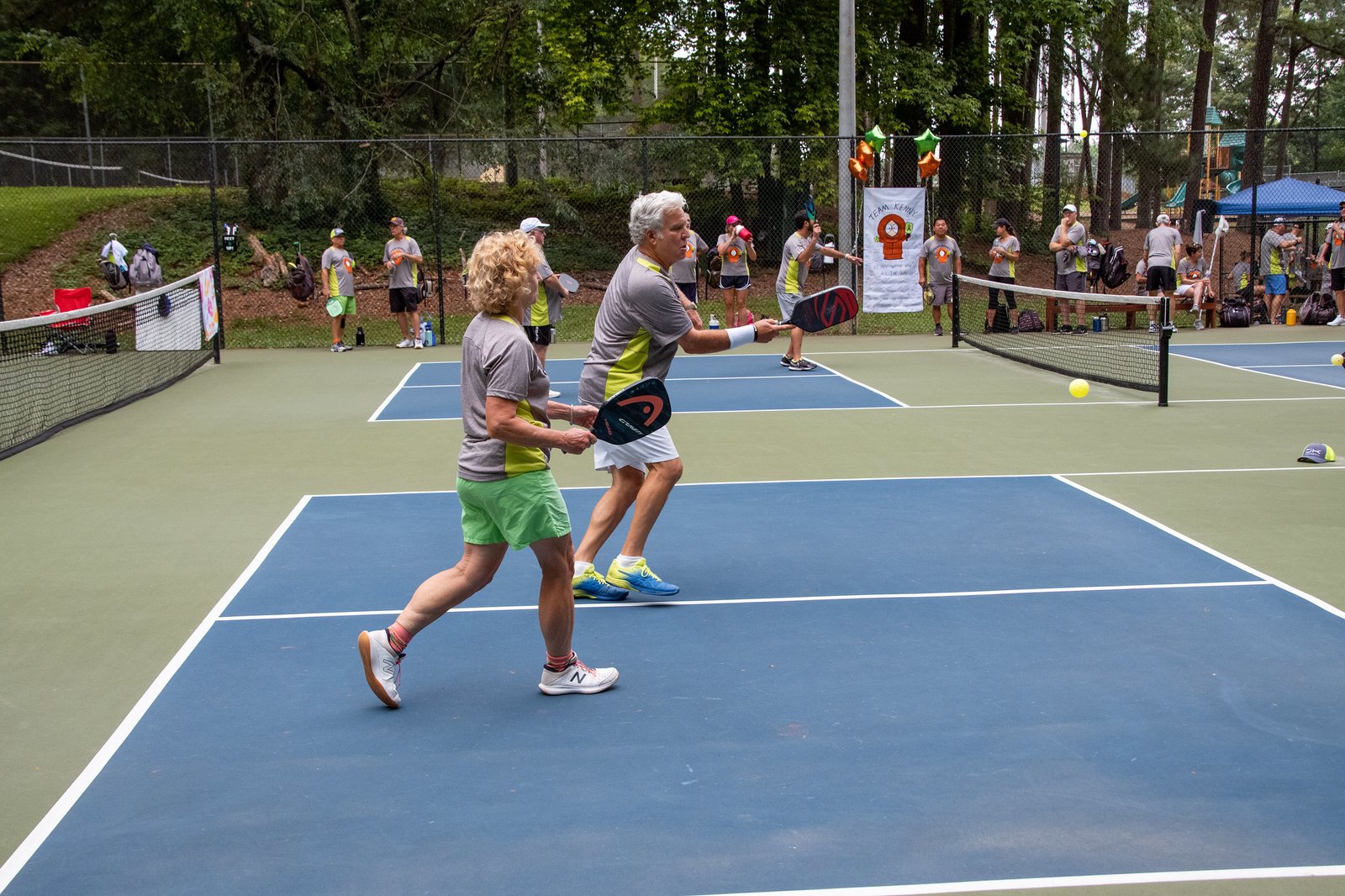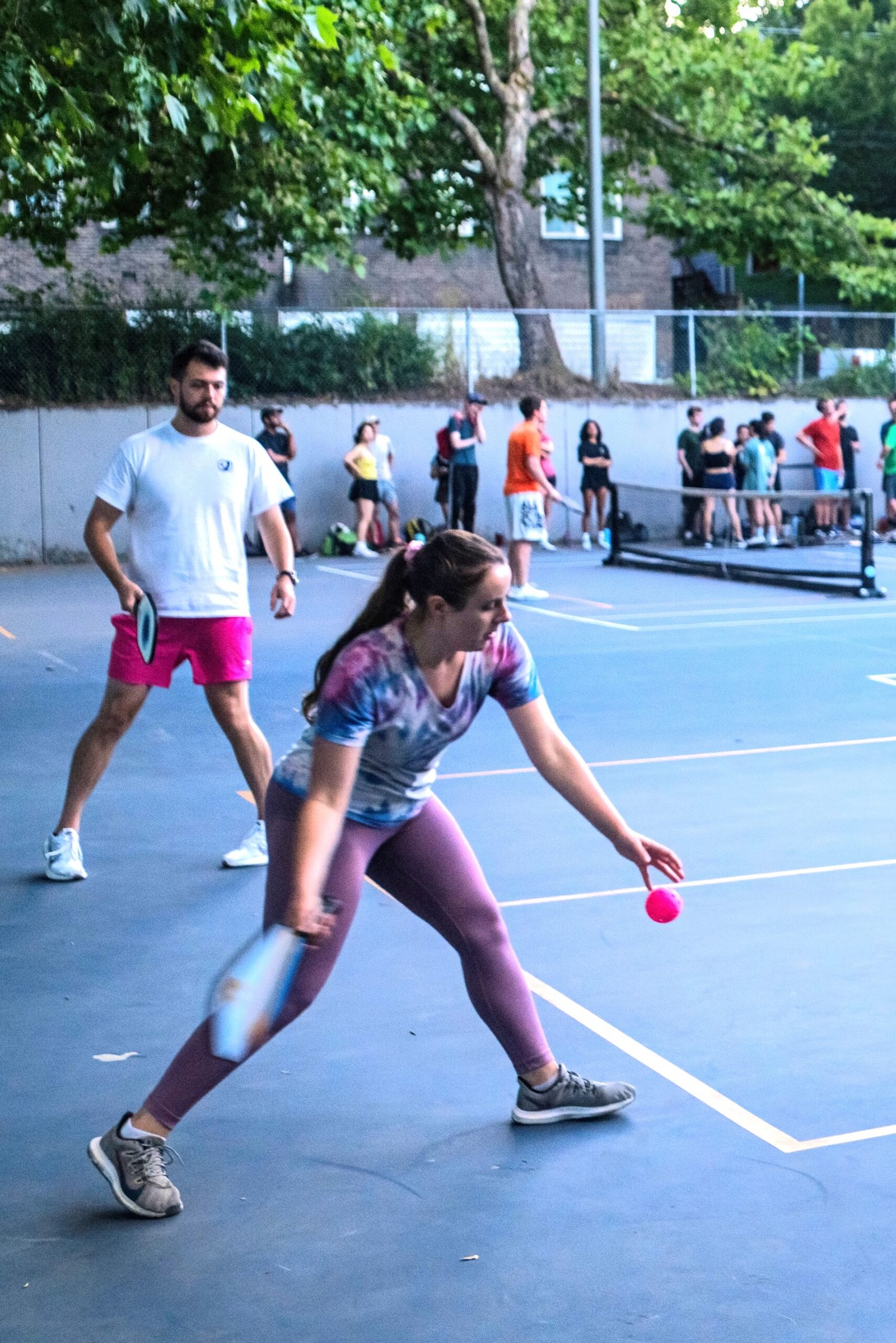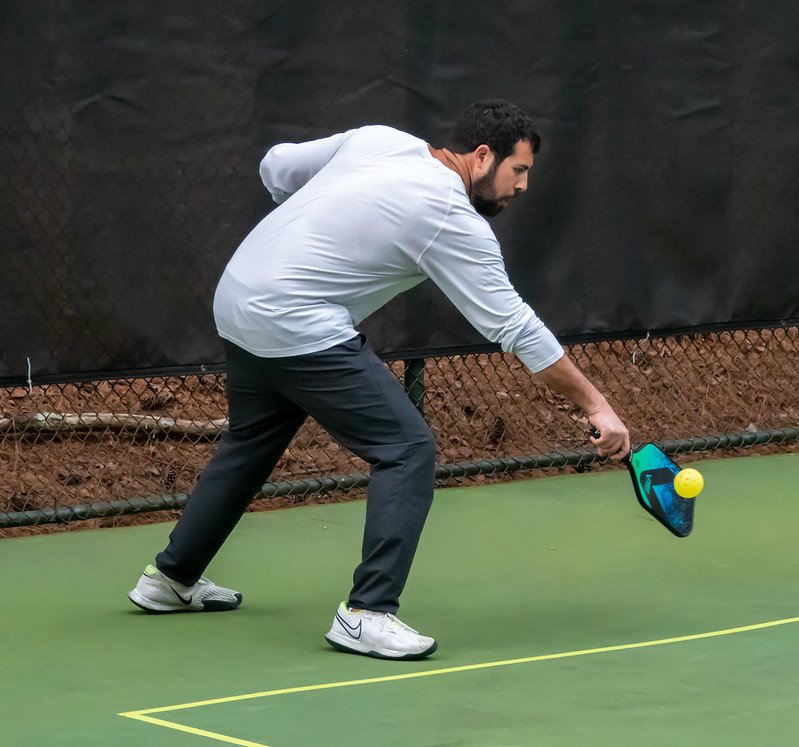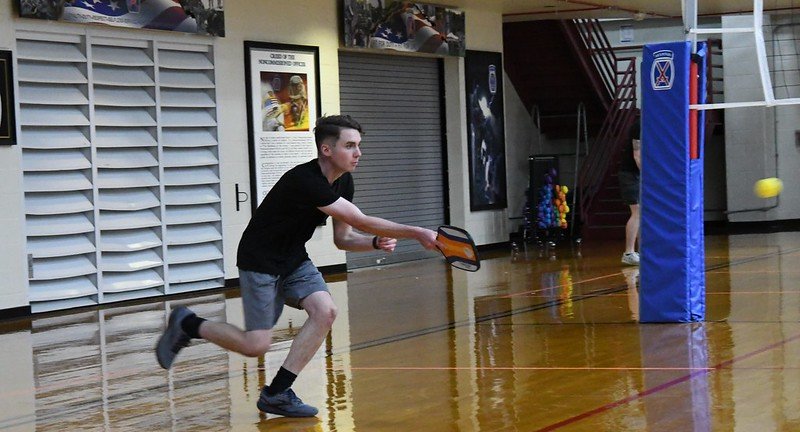Welcome to the world of pickleball doubles, where teamwork and strategy reign supreme. Whether you’re a novice looking to dive into this exhilarating sport or a seasoned player aiming to sharpen your skills, understanding the dynamics of pickleball doubles is crucial. In this comprehensive guide, we’ll delve into the art of pickleball doubles strategy, arming you with tips, techniques, and a winning game plan to elevate your pickleball game. Join us as we explore the court, master the moves, and unravel the secrets to success in the world of pickleball doubles.
Table of Contents
Optimal Player Positioning in Pickleball Doubles
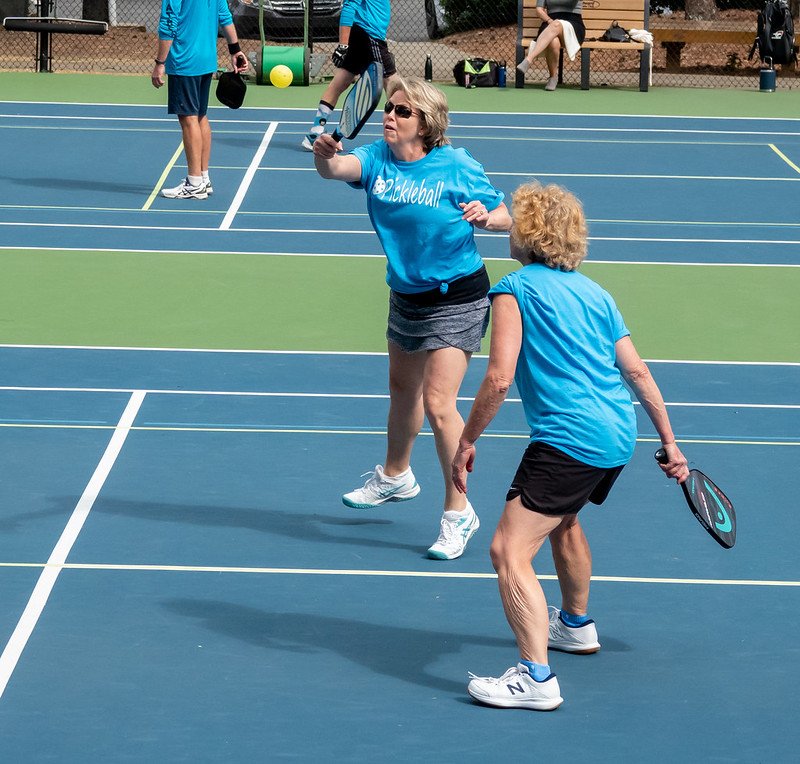
In the game of pickleball, player positioning plays a crucial role in strategy and gameplay. Understanding the ideal positions for each player or team member can significantly impact the outcome of the match. Here’s a comprehensive breakdown of player positioning in pickleball:
Serving Player or Team
The serving player or team typically stands behind the baseline, preparing to initiate the game. They must remain in this position, or sometimes just inside the baseline, to execute the serve. After delivering the serve, the serving player/team must be ready to respond to the serve return after it bounces due to the Double Bounce Rule.
Receiver
The receiver, who aims to return the serve, usually positions themselves at or near the baseline. However, it’s essential for the receiver to remain alert and agile, as they may need to move forward swiftly to return a shorter serve effectively. This adaptability in positioning is key to maintaining control over the rally.
Receiver’s Partner
The receiver’s partner enjoys more flexibility in positioning on the court. While they may stand anywhere on their side, it’s a common practice to position oneself at the Non-Volley Zone (NVZ) line. Being situated at the NVZ line provides the partner with an advantageous position to engage in the game, as it allows for quick net play and helps maintain control over the front court.
Mastering Net Positioning in Pickleball
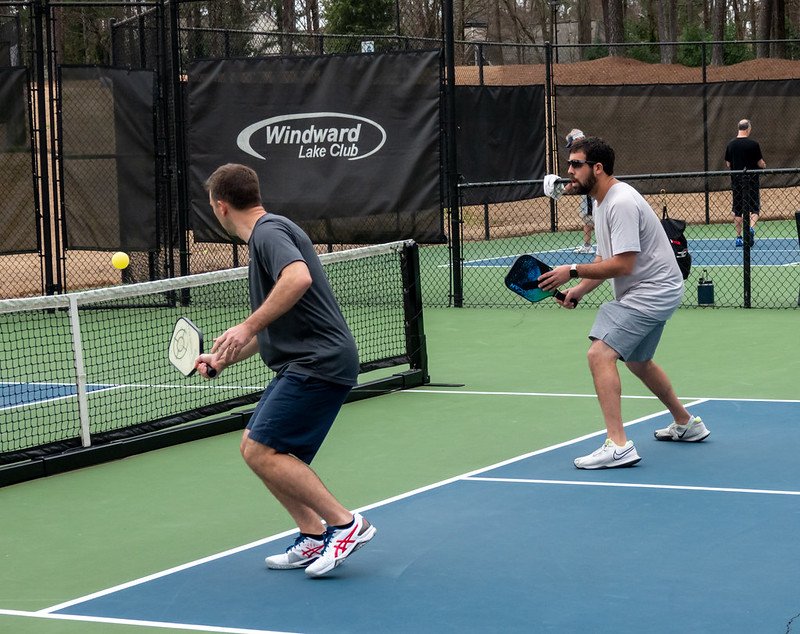
In the dynamic game of pickleball, strategic net positioning can make all the difference. Whether you’re the receiver or part of the serving team, understanding how and when to advance to the Non-Volley Zone (NVZ) is key to maintaining control over the match. Here’s a comprehensive guide on how to make your way to the net and secure your position:
Receiver’s Advance to NVZ
After successfully returning the serve, the receiver should promptly advance towards the NVZ line. The ideal positioning is parallel to their partner, forming a cohesive defensive front.
Serving Team’s Move to NVZ
Simultaneously, the serving team members should move toward the NVZ line as a unit, particularly after the third shot, which typically marks the return of serve. This synchronized movement helps maintain a strong court presence.
No Man’s Land Strategy
It’s not uncommon for players to find themselves caught in the mid-court region, often referred to as “no man’s land.” When this happens, it’s crucial to stop and promptly assume the ready position, known as the split step. This strategic pause allows you to regain balance and readiness before attempting a shot. It may require two or three well-placed shots to advance safely to the NVZ line in a balanced manner.
Staying Put at the NVZ
Once you’ve successfully advanced to the NVZ, the rule of thumb is to stay there. Avoid moving back unless it becomes necessary, such as when returning a lob shot. In such cases, quickly return to the NVZ line as soon as possible to maintain an advantageous court position.
Mastery of net positioning and movement is a fundamental aspect of successful pickleball gameplay. By understanding when and how to advance to the NVZ, you can enhance your court coverage, control, and overall effectiveness in the game.
Synchronized Movement: The Art of Partner Coordination in Pickleball
In the dynamic world of pickleball, effective communication and coordination between partners are paramount. The movements of each partner are intrinsically linked to the actions of the other, ensuring seamless and strategic gameplay. Here’s an in-depth exploration of the essential aspects of partner coordination in pickleball:
Partner-Led Movement
In pickleball, it’s the partner who’s hitting the ball that dictates when and where the team should move. This synchronization is vital for maintaining control and strategy during the game.
Baseline Partnership Movement
When one partner stands at the baseline takes a shot, and subsequently moves toward the Non-Volley Zone (NVZ) at an angle corresponding to their shot, the other partner should follow suit. However, the second partner must advance in a timely manner. This simultaneous movement ensures that the team maintains a united front and strategic positioning.
Avoiding the Inviting Gap
Partners separated between the baseline and the NVZ creates an inviting gap for opponents to exploit with a potentially winning shot. Staying in unison helps minimize these vulnerabilities and maintain court coverage.
Closing the Gap
In situations where one partner is drawn toward the sideline to return a shot, the other partner must move toward the centerline to close the gap in the middle of the court. This strategic adjustment helps defend against high-percentage shots for the opponent, making it more challenging for them to pass down the open sideline. The “string theory” analogy is useful here: Imagine you and your partner are tethered by a string. If one partner is pulled wide, the other must respond by moving an equal distance to maintain the integrity of the string and court coverage.
The art of partner coordination in pickleball hinges on a well-choreographed dance of movement, positioning, and teamwork. By staying in sync and responding dynamically to each other’s actions, partners can effectively cover the court, adapt to evolving game dynamics, and enhance their chances of success in this exhilarating sport.

Strategies for Winning Pickleball Doubles
Effective Communication at the Court Center in Pickleball
Reaching a level of synergy with your pickleball partner, where you can anticipate each other’s moves, is undoubtedly a valuable asset. However, even in the realm of silent understanding, there’s a particular hotspot on the court that thrives on communication – the center.
The center of the court can become a whirlwind of paddle-clashing chaos if not handled correctly. When both players converge on the same ball, or when proximity hinders accurate shots, a coordinated approach becomes essential.
The Power of Communication
In the heart of the action, strategic thinking and communication are your allies. Communication here can take both verbal and nonverbal forms. Rather than leaving it to chance in the heat of the moment, it’s advisable to establish a game plan beforehand. A brief 30-second conversation can work wonders.
Forehand Dominance Strategy
A commonly adopted strategy is to let the player with the forehand take center shots. This approach often ensures that you and your partner have a defined understanding. However, this arrangement can evolve based on factors like your partner’s strong backhand, being opposite-handed, or the varied skill levels of your opponents, necessitating adjustments.
Quick Communication On the Fly
In cases where on-the-fly changes occur during a game, simple yet effective verbal cues such as “Yours” or “Mine” are reliable methods to convey your intentions to your partner instantly. This ensures seamless cooperation and minimizes potential missteps at the court center.
Mastering effective communication in the heat of the game’s center ensures that you and your partner can navigate pickleball’s unique challenges, enhancing your chances of success and avoiding unintended “friendly fire” scenarios.

Strategic Positioning for Effective Serve Returns in Pickleball
The excitement of reaching the kitchen line in pickleball is undeniable, but it’s crucial to exercise restraint and strategic positioning, especially during serve returns. Starting too close to the baseline can put you in a challenging spot when receiving the serve. The art of serve returns hinges on finding the right positioning:
Balancing Distance and Precision
While it’s a given that the serve must bounce before you return it, positioning yourself too close to the baseline can leave no room for maneuvering between you and the ball. To set yourself up for successful serve returns, maintaining a balanced distance is key.
Strategic Step Back
To avoid crowding the baseline during serve anticipation, take a step back, positioning yourself at least two feet behind the baseline. In the case of an opponent with a formidable serve, extending that distance to three feet can provide you with valuable room for effective returns.
Reading Your Opponent
Exceptionally important is reading your opponent’s serving style. If you’ve learned through gameplay that your opponent tends to serve short, you may choose to stand closer to the baseline. However, remain vigilant, as they could attempt to surprise you with a deep serve to catch you off guard.
Strategic Coordination with Your Partner
Remember that your partner will be stationed at the kitchen line while you receive the service. This positioning advice applies specifically to the serve receiver. By maintaining the right distance from the baseline, you enhance your ability to adjust to serve variations and execute precise returns swiftly.
Strategic positioning during serve returns is a fundamental aspect of pickleball gameplay. By finding the optimal balance between distance and precision, you can enhance your ability to react to serves effectively and contribute to your team’s success on the court.
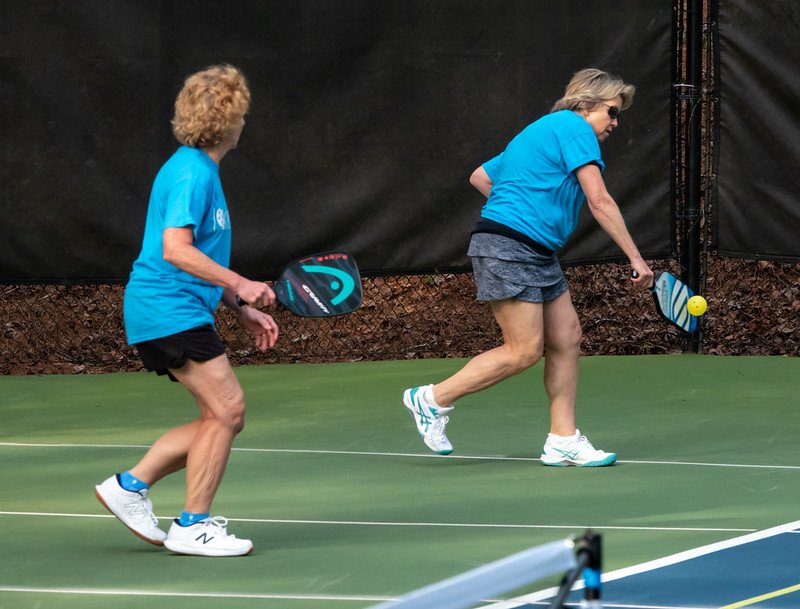
The Art of Targeting Your Opponent’s Feet in Pickleball
A tried-and-true strategy from singles pickleball that seamlessly translates to doubles play is directing your shots at your opponent’s feet. This seemingly simple tactic can have a profound impact on your game, leading to crucial points and victories. Here’s a breakdown of why aiming low can be a game-changer in pickleball:
Universal Effectiveness
The beauty of aiming at your opponent’s feet is its universal applicability. Regardless of your opponent’s court position, this strategy remains viable and effective, making it a valuable addition to your playbook.
Serve Suppression
Targeting low serves the dual purpose of making it challenging for your opponent to return and minimizing the ball’s upward bounce. While seasoned players may handle low serves, beginners and intermediates often struggle, adding an edge to your gameplay.
Effective Dinking Technique
When employing this strategy for dinking, it’s essential to use an open paddle face and employ a gentle push or lift to control the ball. A well-executed dink combines precision with subtle pressure, forcing your opponent to move for the return.
Minimal Backswing, Maximum Placement
Focus on minimal backswing when using this strategy, as placement takes precedence over power. Large backswings can be easier for opponents to read and slow down your paddle’s return to the ready position.
Zone Control
Targeting your opponent’s feet is particularly effective when they are close to the baseline, hindering their progression to the kitchen line. It also proves advantageous when your opponent occupies the transition zone between the baseline and the non-volley line.
Varied Low Shots
To keep your opponents guessing and avoid predictability, incorporate low shots strategically with different angles throughout the game. This unpredictability is a key element in maximizing the effectiveness of this strategy.
The tactic of aiming at your opponent’s feet transcends court positions and skill levels, making it a versatile and valuable asset in your pickleball arsenal. By mastering the art of targeting low shots, you can apply pressure, gain control, and increase your chances of securing victories in your pickleball matches.

Elevate Your Game with Precision Drop Shots in Pickleball
Becoming a top-tier pickleball player hinges on mastering the art of the drop shot. While it requires time and practice to perfect, the rewards are substantial, leaving your opponents bewildered. Here’s an in-depth look at the strategic significance of incorporating drop shots into your game:
Timing the Drop Shot
The drop shot, often referred to as a “third-shot drop,” is a strategic move commonly employed right after the two-bounce rule has been observed, typically on the third shot. Players may also opt for a drive on their third shot and subsequently introduce the drop shot on the fifth shot. This well-timed maneuver can catch opponents off guard and secure the upper hand in doubles play.
The Art of Subtlety
Drop shots are characterized by their finesse rather than power. The objective is to delicately place the ball behind the net into the kitchen, emphasizing precision over force. A delicate balance must be struck, as hitting too softly leads to the net, gifting your opponent a point, while hitting too high sets up an easy smash for your opponent. Targeting your opponent’s backhand during a drop shot further compounds the challenge for them.
Aligning Drop Shots with Dinks
Viewing drop shots as long-range dinks is a useful strategy. Both a well-executed dink and drop shot aim to land the ball in the kitchen. To practice your drop shot, start by honing your dinking skills. Begin with dinks at the kitchen line, gradually moving back until you can consistently drop the ball into the kitchen from the baseline.
Tactical Advantage of Drop Shots
Drop shots are not just about scoring points; they serve as an effective means to reach the kitchen line. Properly executed drop shots are challenging for opponents to attack, buying you valuable time and potentially extending the rally. In a challenging game, deploying drop shots strategically can be the game-changer that turns the tide in your favor.
Incorporating precision drop shots into your pickleball game is a game-winning move. By mastering this finesse shot, you can add an element of surprise, assert control, and enhance your ability to seize the kitchen, ultimately giving your team the edge in the rally and securing those pivotal points.

Nurturing Successful Pickleball Doubles Partnerships: Patience and Positivity
Transitioning from singles to doubles pickleball adds a new layer of complexity to the game. While you retain control over your moves, the dynamics change as your partner’s decisions come into play. Success in doubles pickleball hinges on two key ingredients: patience and trust. Here’s how these qualities can elevate your doubles game:
Celebrate and Acknowledge
In doubles pickleball, both success and missteps are shared experiences. Celebrate your victories and acknowledge your mistakes. Remember, luck can also play a role in the outcome. By recognizing the collective nature of the game, you create a positive environment for yourself and your partner.
Patience and Trust
Patience is crucial in a doubles partnership. Trust your partner’s skills and decision-making just as you do your own. Resist the urge to force shots if your partner has a better angle or to impulsively act without thinking. In doubles, your risk of errors doubles, making patience and trust essential for error reduction.
Communication and Support
Effective communication is the backbone of successful doubles play. Call balls in and out for your partner, especially during serves. Support each other with words of encouragement and motivation. Celebrate every point, regardless of the outcome, by tapping your partner’s paddle. This not only fosters positivity but also strengthens the camaraderie between teammates.
Learning from Mistakes
Mistakes are opportunities for growth. Instead of assigning blame, view errors as chances to learn and improve together. Be honest about your mistakes and encourage your partner to do the same. By analyzing what went wrong, you can lower the risk of repeating the same mistakes and elevate your performance.
Fostering Growth
Embrace the journey of improvement and growth in your doubles partnership. Each point, whether it ends in victory or defeat, is a stepping stone. By nurturing a positive, patient, and trusting relationship with your partner, you can navigate the complexities of doubles pickleball and surprise yourselves with newfound skills and victories.
In doubles pickleball, patience and positivity are the building blocks of a successful partnership. By embracing these principles and fostering a supportive, growth-oriented dynamic with your partner, you can unlock your full potential and enjoy the game to the fullest.
In the exhilarating realm of pickleball doubles, strategy is your most potent weapon, and teamwork is your strongest ally. Armed with the knowledge and techniques shared in this guide, you’re poised to take your pickleball game to new heights. Whether you’re defending your side of the court with finesse or orchestrating offensive plays like a maestro, remember that pickleball doubles is as much about enjoying the game as it is about winning. Keep practicing, refining your strategies, and nurturing your partnership on the court. With every swing of the paddle, you’re inching closer to pickleball glory. Now, get out there, put these tips into action, and embrace the thrilling world of pickleball doubles!

